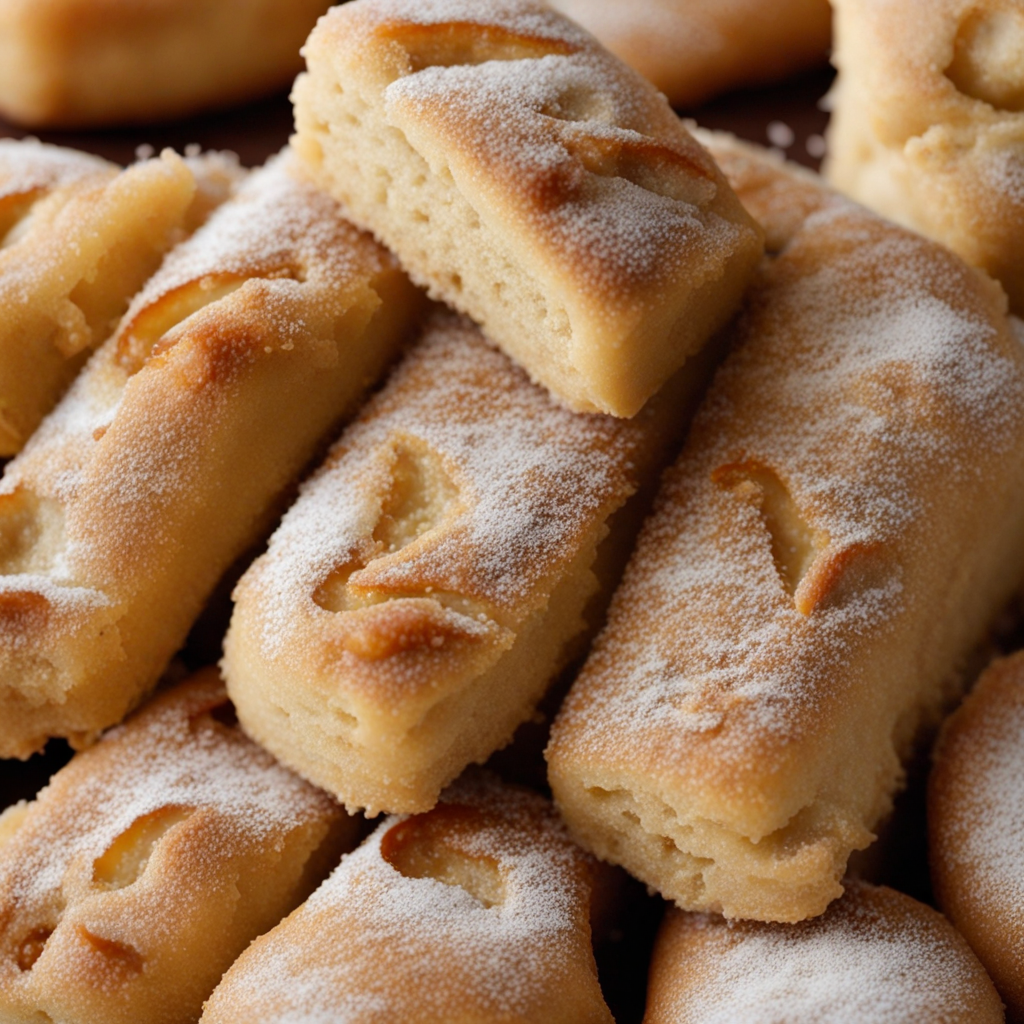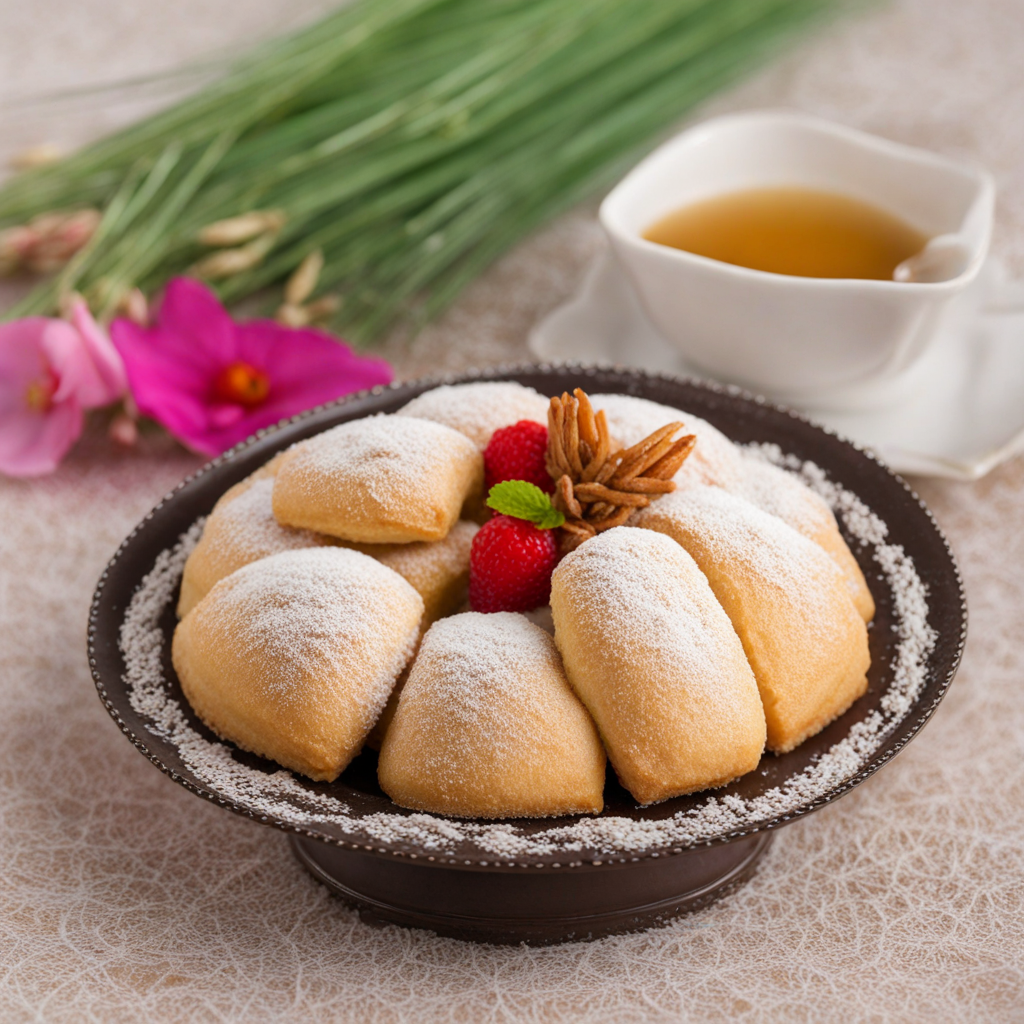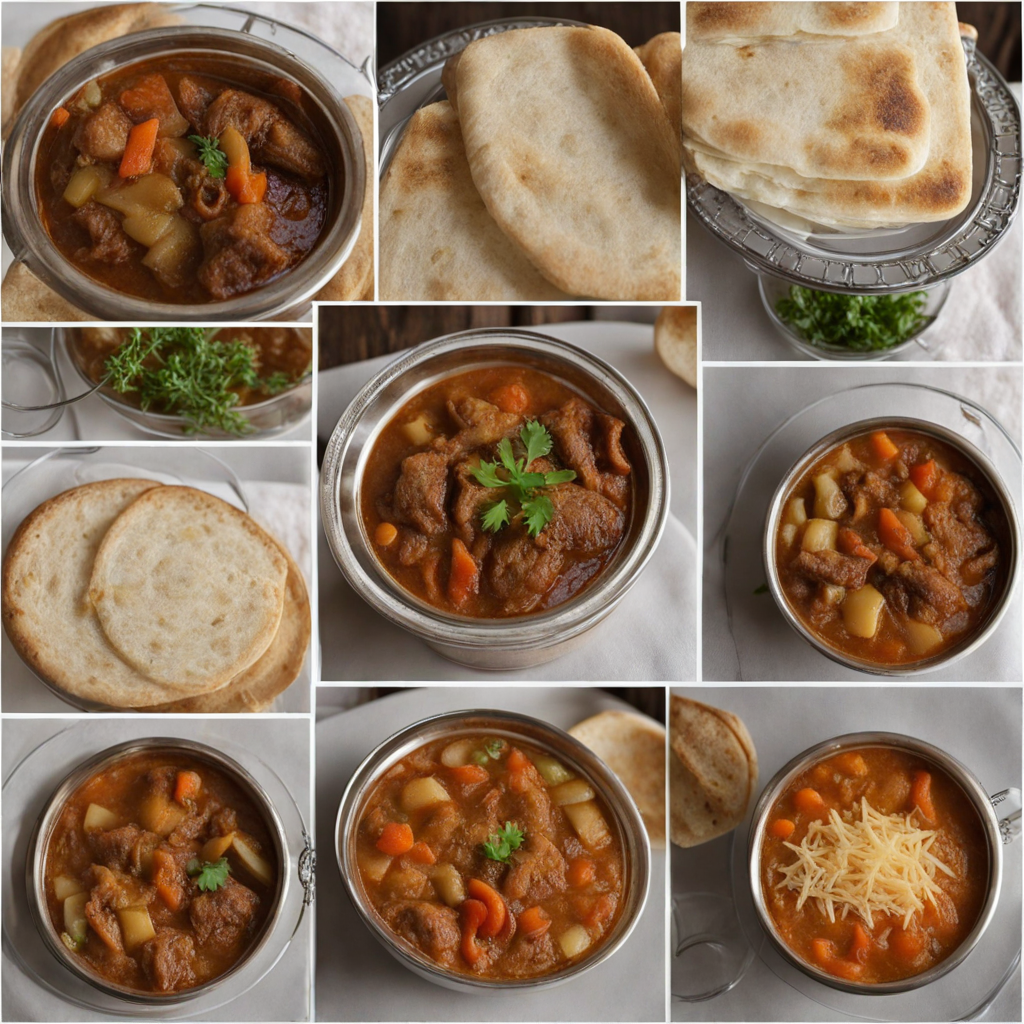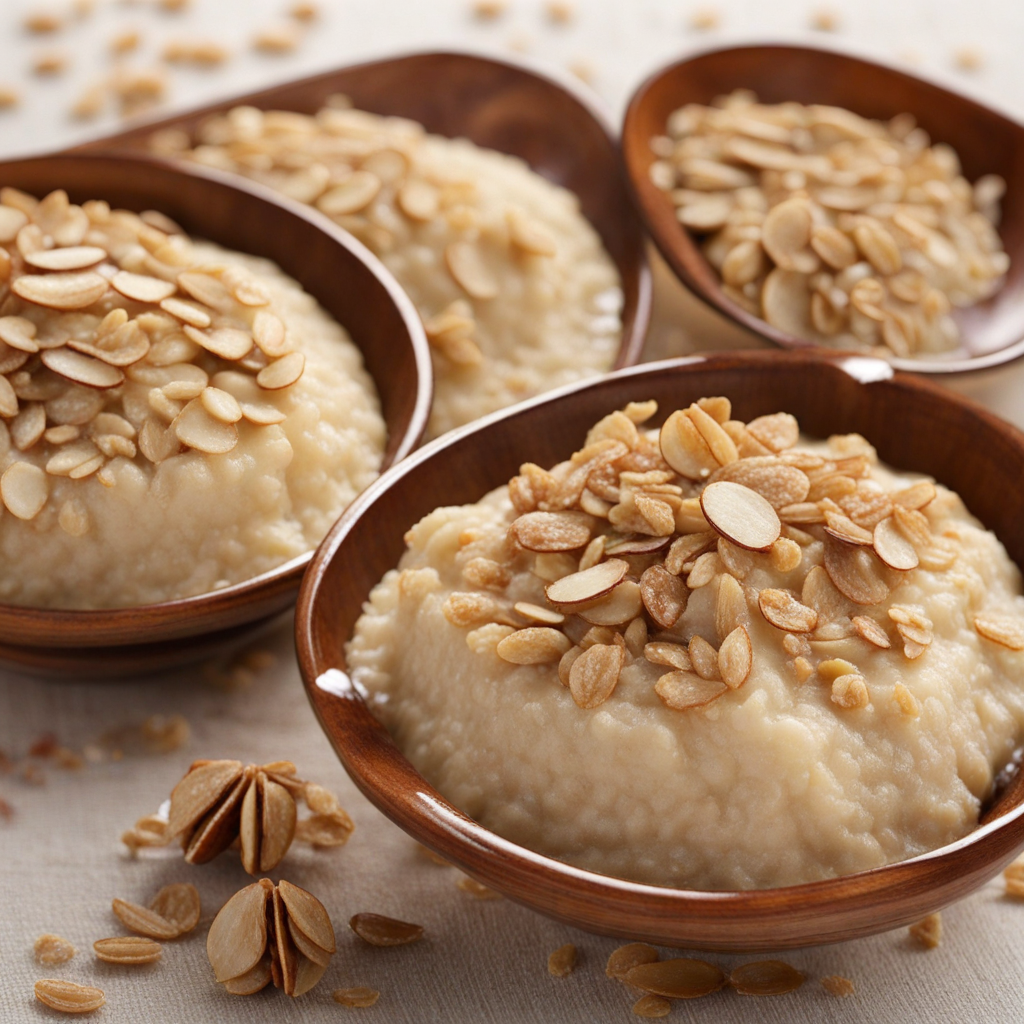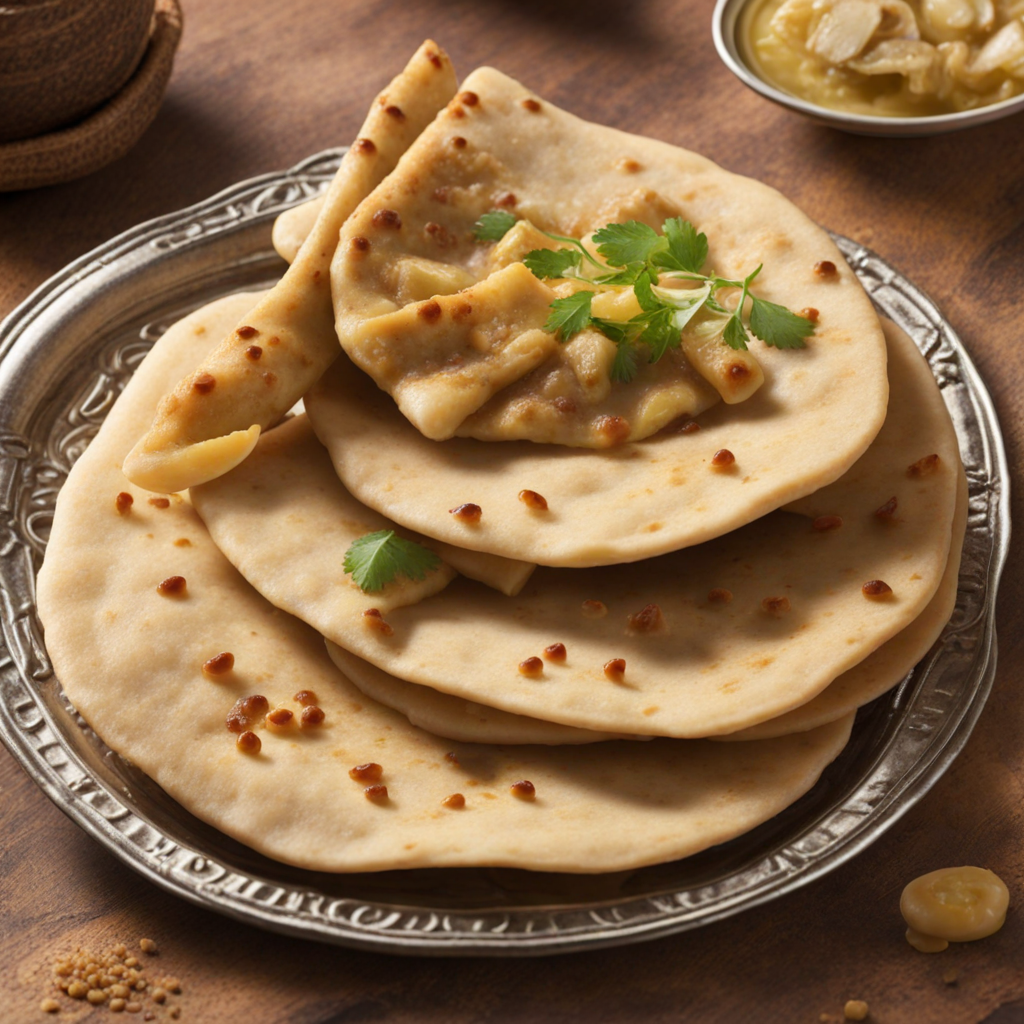Aseeda
Aseeda is a traditional Emirati dish that showcases the rich culinary heritage of the United Arab Emirates. This unique dish is primarily made from flour, which is slowly cooked with water and salt to create a smooth, thick porridge-like consistency. The preparation involves stirring continuously to achieve the right texture, resulting in a comforting, starchy base that serves as the foundation for various accompaniments. Its mild flavor allows Aseeda to be paired beautifully with a variety of toppings, making it a versatile choice for many meals. The dish is often enjoyed with a drizzle of date syrup or honey, adding a delightful sweetness that complements its savory qualities. In some variations, it is served alongside a rich meat stew or served with spiced lentils. The combination of Aseeda with savory and sweet elements creates a harmonious balance that tantalizes the taste buds. The warmth of the dish makes it especially popular during the colder months or during festive occasions, where it is shared among family and friends. Aseeda is not just a meal; it is an experience that embodies the communal spirit of Emirati culture. It is typically eaten with the hands, encouraging a sense of togetherness as diners gather around a communal plate. This traditional method of eating enhances the flavors and textures, allowing for a more intimate connection with the food. Whether you are enjoying it as part of a festive feast or a comforting everyday meal, Aseeda promises a taste that is both unique and deeply rooted in the history of the UAE.
How It Became This Dish
The History of عصيدة (Aseedah) in the United Arab Emirates Introduction Aseedah, a traditional dish of the United Arab Emirates, is more than just food; it is a narrative of culture, community, and heritage. This thick, porridge-like dish made predominantly from wheat flour has been a staple in the diets of Emiratis for centuries. Its rich history reflects the agricultural practices, social customs, and evolving culinary landscape of the region. This exploration into Aseedah uncovers its origins, cultural significance, and its development over time, showcasing how this dish has woven itself into the fabric of Emirati life. Origins The history of Aseedah can be traced back to the early nomadic tribes of the Arabian Peninsula. As a region characterized by its harsh desert landscape, the tribes relied heavily on the resources available to them, with wheat being one of the few crops that could be cultivated in the limited arable land. The cultivation of wheat in the UAE dates back to around 2000 BCE, and by the time of the early Islamic period, it had become a significant part of the local diet. The preparation of Aseedah is relatively simple, which aligns with the lifestyle of the Bedouins who moved frequently and needed sustenance that was both nourishing and easy to prepare. The basic ingredients of Aseedah include wheat flour, water, and sometimes dates or sugar for sweetening. The dish was traditionally cooked over an open flame, allowing communities to gather around the fire, reinforcing bonds and sharing stories. This communal aspect of cooking Aseedah underscores its significance in Emirati culture, serving not just as nourishment but as a medium for social interaction. Cultural Significance Aseedah holds a special place in Emirati culture, often associated with hospitality and generosity. It is a common feature at significant life events such as weddings, births, and religious celebrations. The dish symbolizes abundance and the sharing of resources, reflecting the values of community and togetherness that are central to Emirati identity. In many households, Aseedah is served alongside meat or stews, enhancing its nutritional value and making it a hearty meal. It is not uncommon to see Aseedah served during the month of Ramadan, providing sustenance to those breaking their fast. The dish's versatility extends to its preparation methods; Aseedah can be made sweetened or savory, allowing for variations that cater to different palates and occasions. Moreover, Aseedah is often associated with family gatherings and gatherings of friends. In traditional Emirati culture, sharing food is a profound expression of hospitality. When guests are welcomed into a home, it is customary to offer them Aseedah, often accompanied by dates and Arabic coffee. This gesture reflects respect and goodwill, making Aseedah an emblem of hospitality. Development Over Time As the UAE underwent significant transformations in the 20th century, particularly with the discovery of oil and the subsequent modernization of society, the culinary landscape began to shift. Traditional dishes like Aseedah faced challenges from fast food and Western cuisine, which became increasingly accessible and popular. However, Aseedah has demonstrated remarkable resilience, adapting to contemporary tastes while preserving its cultural integrity. In recent years, there has been a renewed interest in traditional Emirati cuisine, driven by a desire to reconnect with cultural roots and promote national identity amidst globalization. Aseedah has experienced a revival, finding its way into restaurants and culinary festivals, often presented with a modern twist. Chefs are experimenting with flavors, incorporating local ingredients like saffron or cardamom, and presenting Aseedah in innovative ways that appeal to younger generations. Moreover, the UAE's commitment to preserving its heritage is evident in the culinary arts. Initiatives aimed at promoting traditional Emirati cuisine, including Aseedah, have gained momentum. Culinary schools and cultural organizations are emphasizing the importance of these dishes in their curricula, ensuring that future generations appreciate and understand the significance of their culinary heritage. Regional Variations and Modern Interpretations While the foundational elements of Aseedah remain consistent, regional variations have emerged, reflecting local tastes and available ingredients. In some areas, Aseedah may be enriched with spices or accompanied by a variety of meats, while in others, it may be served simply with honey or date syrup. This adaptability highlights not only the dish's versatility but also the influence of the diverse populations that inhabit the UAE. In modern kitchens, Aseedah is often prepared using contemporary cooking methods, such as electric stoves and pressure cookers, which streamline the cooking process. However, many Emiratis still cherish the traditional methods, often passing down recipes through generations, ensuring that the essence of Aseedah remains intact. Culinary events and festivals also play a crucial role in the development of Aseedah. Competitions that celebrate traditional dishes encourage creativity and innovation while preserving age-old recipes. These events have fostered a sense of pride in Emirati cuisine, encouraging chefs and home cooks alike to explore the rich tapestry of flavors that define their culinary heritage. Conclusion Aseedah is more than just a dish; it is a vessel of history, culture, and identity for the people of the United Arab Emirates. Its origins rooted in the resilience of the nomadic tribes have evolved into a symbol of community and hospitality. As the UAE continues to navigate the complexities of modernity, Aseedah remains a constant, a reminder of the values and traditions that bind its people together. In a world that often leans toward rapid change and globalization, the revival of Aseedah and other traditional dishes signifies a collective desire to honor the past while embracing the future. It stands as a testament to the enduring nature of culture and the power of food to connect, nourish, and tell the stories of generations. In every bowl of Aseedah served, there lies a history waiting to be shared, a connection to the land, and a celebration of the Emirati spirit.
You may like
Discover local flavors from United Arab Emirates


